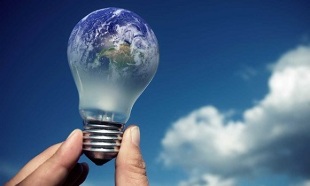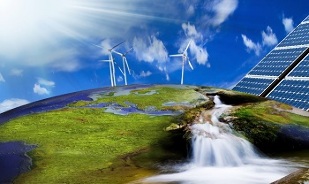
In the modern world, energy saving is now an essential part of life in a civilized society. This is health care, money saving, and home comfort.
One of the most important (global) properties of energy saving is, however, the protection of the environment from negative influences.
Energy saving concept
The concept of "energy saving" has been used for a long time. Energy saving today is characterized by a conceptual apparatus.
The energy saving is based on the energy resource as an energy carrier that can be used for any activity. Energy saving is any activity aimed at reducing the consumption of energy resources, without prejudice to the main function of their use. Despite the extreme accuracy of the definitions, there is often confusion around the concepts of "energy saving" and "energy efficiency". In this regard the definition of the latter is given. Energy efficiency is a set of characteristics that reflect the ratio of the effect of using energy resources to the cost of the energy resources themselves. The energy saving efficiency is characterized, among other things, by the energy efficiency class, which reflects the degree of usefulness of a product in terms of energy saving. Special energy surveys are carried out to determine energy efficiency.
Basic principles of energy saving
Now that we have defined the basic concepts in this area, it is worthwhile to reflect on the basic principles of energy saving:

- Use of alternative energy sources.
- Use of secondary energy resources.
- Use of non-energy-intensive technologies and devices.
- Take measures for the rational use of the available energy resources. Assessment of the economic feasibility of using energy-saving technologies and solutions.
This list can be assigned to both the principles of energy saving regulation and the main approaches to the insulation of a private house. The most important thing: energy saving includes not only additional possibilities for energy generation, but also activities to save available energy and its rational use.
Alternative energy sources
Today there is a lot of talk about alternative energy sources. We usually mean renewable energy sources. What is endlessly renewed on planet earth? This is of course water, the sun, the wind, the earth's crust. Of course, if you go into detail, solar activity changes over time, and the surface of the earth's crust becomes thinner, but all of this is on the scale of the universe. We speak of renewal within the framework of our civilization - we believe that in the centuries to come, the sun will not fade and the earth will not fly out of orbit.
Therefore, the following energy sources are now seen as alternatives to oil, gas, coal and wood:
- Energy of the sun.To use such a source, solar batteries and collectors are used. The former are solar cells that convert solar energy directly into electricity. Solar collectors do not convert energy into electricity, but rather heat the coolant for later use (e. g. for heating water in a private house).
- wind energy.Wind turbines, which generate electricity with blades that are rotated by the force of the wind, are very popular in Europe. Germany already gets a third of its electricity from this renewable energy source.
- energy of water.This is not just about hydropower plants. Today there are heat pumps that convert the heat from water in a lake or pool into stable heating of water in order to heat a house and provide it with hot water.
- Energy of the earth.The heat pumps described above can also use heat from the groundwater or the upper crust for public utilities. Such installations are very popular because they do not require a water source or wind nearby: for example, the coolant can be placed in special pipes under the lawn or in fountains in the garden area.
Secondary energy resources

The recycling of energy is one of the basic principles of energy efficiency. An improvement in the efficiency of the ventilation and air conditioning system used in the building is only possible by recirculating the exhaust air heat. This process of returning part of the heat that leaves the building (the air in the room is heated by the work equipment, people in the room) is known as recovery. In this aspect, energy saving is the activity of saving the energy available in the room.
The operating principle of the recuperator is very simple: thanks to certain platinum, which conducts heat well, the air sucked in from the room warms up the cold flows coming from the street without mixing with them. As a result, no ice, but air heated to 2-3 degrees enters the house, which contributes to a more comfortable microclimate in the room and allows you to save on heating costs due to the rise in temperature in the room due to warm currents. As described above, recuperators are plate-shaped, rotatable (with a rotating element inside) and with an intermediate heat transfer medium. A wide range of recuperator manufacturers allows you to choose a device for different premises and customers.
How can one use communal energy resources rationally?
The rational use of available resources includes not only the installation and operation of energy-efficient devices, but also compliance with a certain regime. Energy saving mode is a way of life that saves energy at the household level. If your goal is to save on electricity bills, the first thing you need to do is install equipment that won't waste kilowatts with power automation and metering. The selection should be based on the marking that confirms that this device or devices allow energy savings. An increase in the energy optimization of the use of resources is only possible with the rational operation of all devices. By timely switching off the lights in rooms where there are no people, by carefully observing the waste of hot water and correctly setting the automatic meters, as well as the consumption of heat and electricity in the house, significant results can be achieved in saving energy and personal money.
What is a passive house?

Energy efficiency and energy saving are inextricably linked to the concept of passive housing. It combines a number of energy-saving measures that together enable low energy consumption. Passive house technology begins its history in the city of Darmstadt, where it was first developed by the physicist Feist. Calculating the energy balance of the house prompted him to create a building that did not have to be connected to the heating even in winter - a passive house. At that time, houses in Germany were consuming around 200 kWh / m² per year. The passive house, on the other hand, only needs 10 kWh / m² per year in order to remain suitable and even comfortable for year-round living. The basic criterion for a passive house is the creation of a closed building envelope with increased thermal insulation and low thermal conductivity. This is achieved through the use of energy-saving, heat-insulating materials to the exclusion of so-called cold bridges (points in the building envelope through which the cold penetrates the building: facade fastenings, window frames).
Evaluation of the effectiveness of energy-saving technologies
In order to bring the energy consumption in a building closer to the standard of a passive house, materials with high heat resistance, modern technical equipment, renewable and secondary energy sources must be used, in short measures that guarantee energy savings. At the same time, energy efficiency is calculated based on the cost of a particular innovation in the house and the impact that such a decision has on the owner. First of all, it is necessary to calculate the impact of the new technology on the production and consumption of a certain type of resource. In this case you need to evaluate the following:
- The level of resource savings (the difference between the resources that are used by energy-efficient and conventional devices during the billing period for the same amount of energy).
- The effect of energy generation (difference or ratio of the amounts of energy that were generated over a certain period of time by the compared equipment options with the same amount of resources).
These indicators give us an idea of the importance of calculating the economic impact. It is calculated by comparing the cost of buying new (and possibly breaking down old) equipment and the income from energy savings from replacing a waste machine with a more modern one (over a period of time). This difference is the effect that the owner will get after a certain time after applying the energy efficient solution. The installation of recuperators or solar panels usually pays for itself in 3-5 years.
In summary, it can be said that saving energy is not just about saving money. First of all, it's about tomorrow, when our children will live.


























